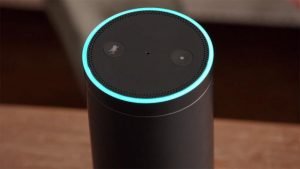Purchasing an Alexa-proficient speaker from Amazon or an outsider maker isn’t the main way you can take the brilliant speaker for a turn. Amazon has made it so you – and different producers – can make your own, insofar as you have something like a Raspberry Pi and a couple of different segments close by.
The possibility of a DIY Alexa speaker is unquestionably luring, yet it accompanies what’s coming to its of disadvantages. Here are a couple of things to consider before building your own Alexa speaker.
You’re not by any means sparing cash
Tragically, in the event that you think constructing an Alexa speaker yourself is an approach to try out Alexa while sparing some money, you would not be right.
While the Amazon Echo is a precarious $179.99 (£147.27 or AU$236.29), you can now get the Echo Dot for just $49.99 (£40.9 or AU$65.72). What’s more, numerous reasonable outsider alternatives, similar to the Fabric Alexa-Enabled Smart Speaker, go at a comparable cost.
In the event that you include every one of the segments you’ll requirement for a DIY Alexa speaker, you’ll surpass that cost in a rush, unless you as of now have everything available.
The Raspberry Pi 3 and power connector will set you back about $45 (£36.82 or AU$59.16) right out of the door. At that point you will require an amplifier and a speaker. Something like the MATRIX Creator, which has a 8-MEMS mouthpiece exhibit and host of different sensors, will set you back another $99 (£81.24 or AU$129.52).
Appearance
Going the DIY course, you’ll be giving up the smooth appearance of Amazon’s equipment. The Echo, Echo Dot and Amazon Tap are all attentive gadgets that are intended to mix in with different things on your kitchen counter or a bookshelf. Also, on the off chance that you don’t care for what they look like out of the case, you can spruce things up with a skin.
While the uncovered hardware of the MATRIX Creator looks truly cool, it’s surely not the discrete look the official speakers emit. Furthermore, it’s not a look everybody will need.
Lamentably, you can’t simply shroud the parts either, as putting them behind a decent looking speaker or underneath something will probably meddle with the receiver’s capacity to get your voice. Not just that, it likewise moves the Raspberry Pi out of achieve, which conveys us to the following issue.
No wake word…yet
Without going the official course, and even with some outsider speakers, you’re surrendering part of what makes Alexa so supportive around the house – the wake word.
With the MATRIX Creator, you should wave your hand over the IR sensor on the board to wake Alexa. Other DIY constructs oblige you to push a catch, like the Amazon Tap. This implies you’ll need to move close to the speaker just to utilize it, unless you can concoct some kind of remote choice. In any case, it’s not perfect and kind of thrashings the reason.
The upshot is that Amazon has discharged an API upgrade that incorporates bolster for a wake word. So this will change in the precise not so distant future, yet the vast majority of the current instructional exercises out there have not been redesigned to oblige the new API.
Reaction time
Not at all like the authority Alexa speakers, my time with the DIY arrangement has incorporated significantly all the more holding up. The Amazon Echo reacts to summons very quickly – for the most part inside 1 to 2 seconds. The DIY alternative, then again, presents approximately a 4-to 8-second turnaround.
In my testing, Echo was regularly completed with its verbose climate redesign before the DIY Alexa speaker even began talking back.
Unwavering quality
The greater part of this is under the suspicion that everything goes to arrange. Yet, the DIY manufacture, which MATRIX obviously states is not prepared for prime time and is for exhibition purposes just, has been exceptionally all in or all out.
I can boot up the Raspberry Pi one time and utilize Alexa easily. Whenever, the MATRIX Creator may get stuck in a circle where it’s always listening to quiet and attempting to make sense of what to do, all while never sitting tight for me to wave my hand over the sensor. Different times, the IR sensor wouldn’t react to my hand waving over it and I would need to give the sensor a tender tap to initiate Alexa.
Additionally, some of the time Alexa didn’t appear to know how to react to straightforward, standard orders that the Echo took care of effortlessly, for example, “Let me know a joke” or “Hello.”
It’s still worth accomplishing for the tinkerer
Taking all things into account, it’s still worth attempting, particularly on the off chance that you have the smallest piece of tinkerer in you. It’s likewise an incredible approach to put Alexa under a magnifying glass and perceive how she may fit into your home.
On the other hand, on the off chance that you would prefer not to experience hours of investigating or sorting out equipment, there is Echosim.io or the developing number of applications which virtualize Alexa, for example, Roger, Lexa or Lexi.








